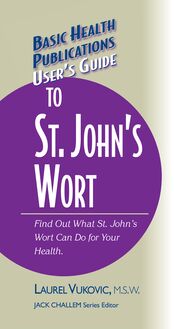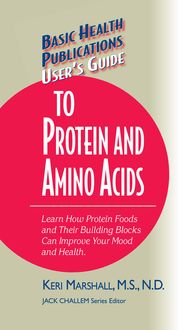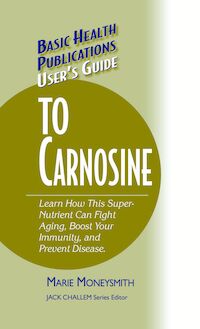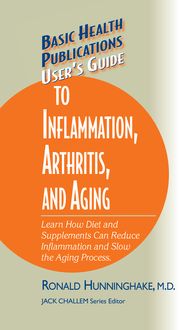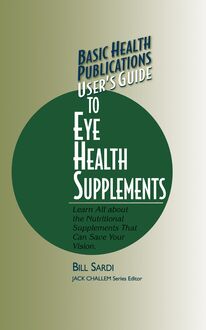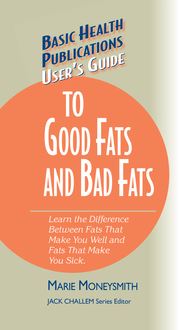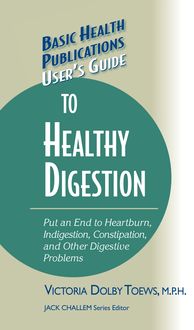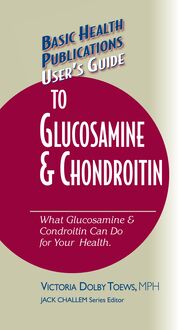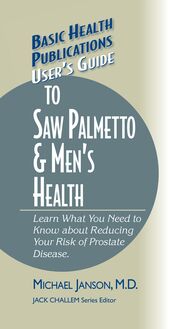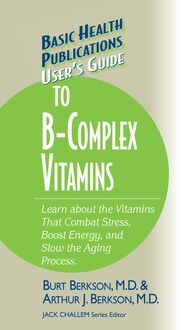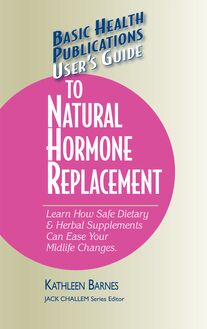User's Guide to Preventing & Reversing Diabetes Naturally , livre ebook
46
pages
English
Ebooks
2003
Vous pourrez modifier la taille du texte de cet ouvrage
Obtenez un accès à la bibliothèque pour le consulter en ligne En savoir plus
Découvre YouScribe en t'inscrivant gratuitement
Découvre YouScribe en t'inscrivant gratuitement
46
pages
English
Ebooks
2003
Vous pourrez modifier la taille du texte de cet ouvrage
Obtenez un accès à la bibliothèque pour le consulter en ligne En savoir plus
Publié par
Date de parution
01 janvier 2003
Nombre de lectures
0
EAN13
9781591206675
Langue
English
Poids de l'ouvrage
1 Mo
Publié par
Date de parution
01 janvier 2003
Nombre de lectures
0
EAN13
9781591206675
Langue
English
Poids de l'ouvrage
1 Mo
The information contained in this book is based upon the research and personal and professional experiences of the author. It is not intended as a substitute for consulting with your physician or other healthcare provider. Any attempt to diagnose and treat an illness should be done under the direction of a healthcare professional.
The publisher does not advocate the use of any particular healthcare protocol but believes the information in this book should be available to the public. The publisher and author are not responsible for any adverse effects or consequences resulting from the use of the suggestions, preparations, or procedures discussed in this book. Should the reader have any questions concerning the appropriateness of any procedures or preparations mentioned, the author and the publisher strongly suggest consulting a professional healthcare advisor.
Series Editor: Jack Challem Editor: Tara Durkin Typesetter: Gary A. Rosenberg Series Cover Designer: Mike Stromberg
Basic Health Publications User’s Guides are published by Basic Health Publications, Inc.
8200 Boulevard East North Bergen, NJ 07047 1-800-575-8890
Copyright © 2003 by Melissa Diane Smith
ISBN 13: 978-1-59120-667-5
ISBN: 1-59120-094-6
All rights reserved. No part of this publication may be reproduced, stored in a retrieval system, or transmitted, in any form or by any means, electronic, mechanical, photocopying, recording, or otherwise, without the prior written consent of the copyright owner.
Printed in the United States of America
10 9 8 7 6 5 4 3 2 1
C ONTENTS
Introduction
1. Why Everyone Should Be Concerned about Diabetes
2. Basics about Diabetes and Prediabetes
3. Using Food as Medicine: The Importance of Diet
4. Relaxation and Activity: The Importance of a Healthy Lifestyle
5. Chromium and Other Helpful Minerals
6. Vitamins C and E and Other Antioxidants and Nutrients
7. Silymarin, Ginseng, and Other Herbal Supplements
Conclusion
Selected References
Resources
For my Greek grandfather who had “a little bit of sugar” at the end of his life
I NTRODUCTION
M ost of us are concerned about heart disease and cancer, the two leading causes of death in our society, and we give little thought to diabetes. But we should. Diabetes is the fastest-growing deadly disease, and it increases the risk of these other major killers.
In diabetes (specifically type 2 diabetes), the body is not able to properly use the food we eat to supply energy to our cells. It was long thought to develop only in older adults, but the incidence of diabetes has skyrocketed in all age groups in the past decade or so. Today, children as young as ten years old are developing this silent killer, and the biggest jump in numbers has occurred in people in their thirties.
What’s more, diabetes usually takes years to develop. Millions of people already have some type of prediabetes, such as Syndrome X, which includes abdominal obesity, high blood pressure, and unhealthy cholesterol and triglyceride levels. Millions more—almost two-thirds of the United States population—are overweight, which is the major risk factor for developing diabetes. It’s apparent that all of us should be thinking about what we can do to prevent diabetes and all the serious complications that accompany it—or how we can control or reverse the condition if we’ve already been diagnosed with it.
And there’s plenty we can do. The twin epidemics of diabetes and excess weight have become public health problems because of a combination of poor diet, excessive stress, and lack of physical activity—all factors that are well within our ability to control and change. At the top of the list is diet. Diabetes and prediabetes are first and foremost nutritional diseases: they respond amazingly well to a lower-carbohydrate diet and thoughtful use of nutritional supplements.
It turns out that the key to controlling the serious complications that usually occur with diabetes—maintaining healthy blood sugar levels—is also the key to promoting good health and a long life. So, whether you have diabetes, are at risk for developing it, or simply want to know the latest on how to maintain or improve your health, sit back, read through this guide, and give yourself a healthy edge.
CHAPTER 1
W HY E VERYONE S HOULD B E C ONCERNED A BOUT D IABETES
D iabetes and the disease process that leads to it are so common—and the consequences so serious—that all of us should be concerned about protecting ourselves against it. Diabetes is the sixth leading cause of death in the United States (by some estimates, the third leading cause), and its prevalence continues to increase at alarming rates in both sexes, all ages, all races, and all education levels.
An estimated 16 to 17 million Americans have diabetes, and perhaps one-third to one-half of these people don’t know it. Millions more have some type of prediabetes, usually without knowing it, including many of the 65 percent of Americans who are overweight.
The increased prevalence of diabetes has paralleled the steady expansion of Americans’ waistlines over the past decade. However, even if you are of normal weight and have no special risk for diabetes, you should know that the standard American diet (appropriately abbreviated SAD) sets us up for excess weight, diabetes, and prediabetes, if not in the short term then in the long term. It’s important to take steps now to avoid becoming one of these statistics.
The Most Common and Fastest-Growing Type of Diabetes
There are two main types of diabetes. This book is all about type 2 diabetes, the most common and the fastest-growing type. Type 2 affects 90 to 95 percent of people who have been diagnosed with diabetes and most of the millions more who are at risk for developing it.
Insulin is the hormone the body produces to lower blood sugar levels (and move sugar into cells where it becomes energy). In type 1 diabetes, the pancreas stops producing adequate insulin because of a malfunction in the immune system. Insulin shots, therefore, are needed for the rest of the person’s life.
Type 2 diabetes starts out very differently. Usually, the body makes plenty of insulin but doesn’t use it properly: the cells aren’t receptive to insulin’s blood-sugar-lowering actions. (In later, more advanced stages of type 2 diabetes, though, the pancreas eventually tires of pumping out so much insulin and stops producing adequate amounts.)
Type 2 Diabetes The most common and fastest-growing type of diabetes. Develops from blood-sugar-lowering insulin’s not working properly.
Type 2 diabetes was long called adult-onset diabetes be cause the condition was usually only diagnosed in people who were middle-aged or older. But that term is now passé because type 2 diabetes is quickly becoming a disease of the young as well as the old. A more detailed explanation of how diabetes and prediabetes develop follows in Chapter 2 , but it’s best to think of type 2 diabetes as “insulin-resistant diabetes.”
Are You at Risk?
Type 2 diabetes is often called “the silent killer” because it develops gradually and can cause serious health complications. However, many people do not even know they have diabetes or that they are at risk for developing it. Research shows that by the time a person is diagnosed with type 2 diabetes, he or she has probably been developing the condition for at least eight to twelve years. Furthermore, in 50 percent of cases the patient has serious health complications by the time of diagnosis.
It’s important to know if you’re one of the growing number of people who is at risk of developing diabetes. Read over the following risk factors and check all that apply:
I am 10–15 pounds or more overweight.
I have high blood pressure.
I have increased blood triglycerides.
I have low high-density lipoprotein (HDL) cholesterol.
I have cardiovascular disease.
I have slightly high blood sugar levels or have tested positive for impaired glucose tolerance.
I lead an inactive lifestyle.
I am an African American, Hispanic, Pacific Islander, or Native American.
I have a family history of diabetes.
For women only:
I have, or have had, gestational diabetes (a temporary type of diabetes that develops during pregnancy).
I have given birth to a baby weighing more than 9 pounds.
I have polycystic ovary syndrome (or PCOS, which is characterized by symptoms such as irregular menstrual periods, difficulty getting pregnant, and excessive facial hair).
If you checked even one of the factors above, you are at increased risk of developing diabetes. Based on evidence showing that the greatest jump in the incidence of diabetes has recently occurred among people in their thirties, the American College of Endocrinology now recommends that anyone with any risk factor above be screened for the disease by age thirty. The more risk factors you have, of course, the more important it is that you’re checked—not just once, but regularly—for diabetes.
Polycystic Ovary Syndrome An insulin-related condition that affects females, causing ovarian cysts, irregular menstrual periods, excess facial hair, and sometimes infertility.
A Diet with Refined Carbohydrates—The Biggest Risk Factor
There’s one more risk factor for diabetes and it’s a big one: eating a diet high in refined carbohydrates—that is, white flour (found in bread, pasta, and baked goods), white rice, white sugar, and other sweeteners (such as high-fructose corn syrup and most food ingredients ending in –ose). Consider that one 1997 study found that women who eat large amounts of refined carbohydrates have double the risk of developing diabetes, compared with those who eat fewer refined foods. What’s more, a high intake of refined carbohydrates also can lead to the development of virtually all of the health conditions that are diabetes risk factors, including packing on the pounds and becoming overweight. (You’ll learn more about this process in Chapter 2 .

